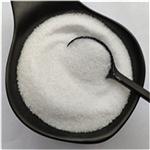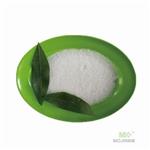1,1,1-Trichloro-2-methyl-2-propanol hemihydrate in combination with dimethyl sulfone, can serve as an appropriate solvent for the freeze drying of certain parenteral organic drugs, which have an increase in many factors such as stability, dissolution rate, dosing accuracy and sterility.
Pharmaceutic
aid (antimicrobial agent).
1,1,1-Trichloro-2-methyl-2-propanol hemihydrate converts benzisoxazole to α-aryloxyisobutyric acid. It forms eutectic with dimethyl sulfone, which is the most suitable media for freeze-drying due to its high solubilizing ability and a good rate of solvent removal.
Chloretone (Parke-Davis).
1,1,1-Trichloro-2-methyl-2-propanol hemihydrate (chlorobutanol) converts benzisoxazole to α-aryloxyisobutyric acid. 1,1,1-Trichloro-2-methyl-2-propanol hemihydrate (chlorobutanol) forms eutectic with dimethyl sulfone, which is the most suitable media for freeze-drying due to its high solubilizing ability and a good rate of solvent removal.
Chlorobutanol or 1,1,1-Trichloro-2-methyl-2-propanol is a opthalmic preservative and sedative hypnotic that possess antibacterial and antifungal properties. It also decreases the conduction velocity and induces conduction failure and automaticity within isolated ventricular muscle strips as well as impacts myocardial cells by acting on cell membrane and reduces isometric tension produced by heart.



